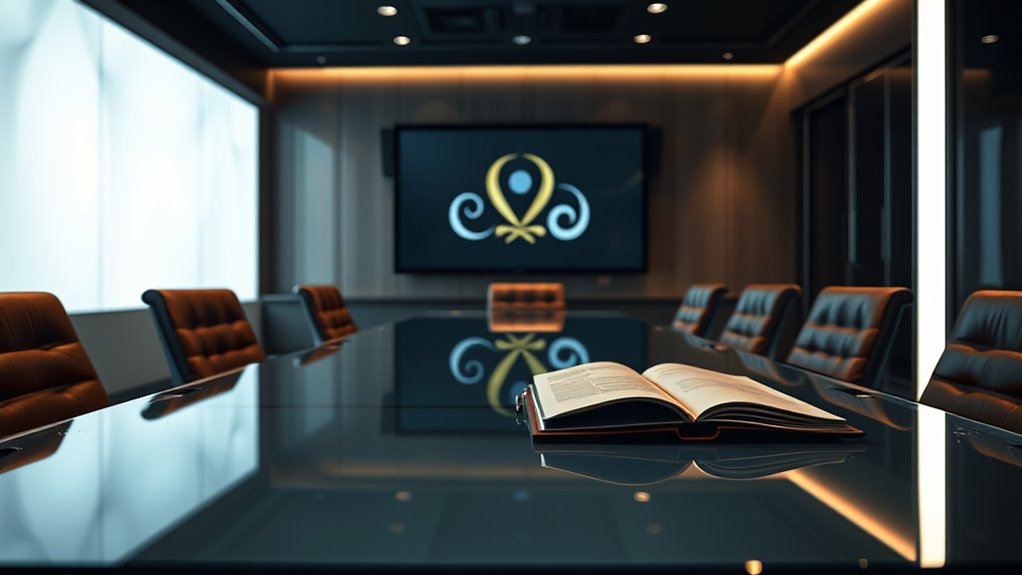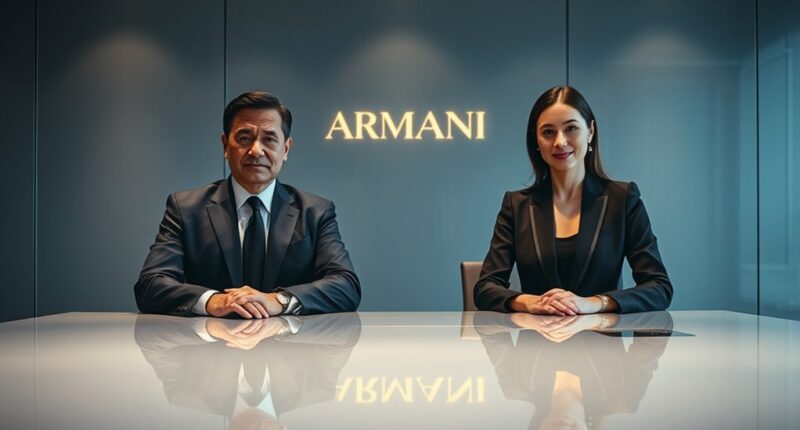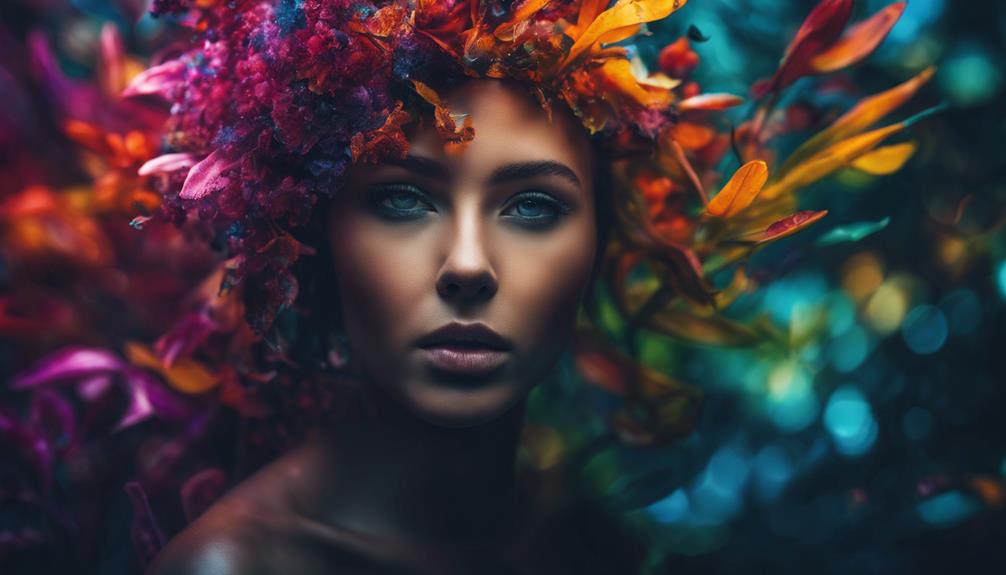LVMH and L’Oréal are the top contenders to acquire Armani, thanks to their strategies for expanding in luxury and beauty markets. LVMH’s focus on fashion and accessories complements Armani’s core, while L’Oréal’s long-term beauty license aligns with its strengths. Both companies see Armani as a valuable asset to strengthen their portfolios. If you explore further, you’ll discover how their plans could shape Armani’s future ownership and growth opportunities.

As Armani prepares for its upcoming ownership shift, several major industry players are positioned as potential buyers. The company’s will specifies that within 18 months of Giorgio Armani’s death, a 15% stake must be sold to one of three key groups: LVMH, L’Oréal, or EssilorLuxottica. After this initial sale, between 30% and 54.9% of Armani must either be sold or the company taken public within five years. This creates a clear timeline and strategic opportunity for these giants to expand their portfolios. Pantaleo Dell’Orco, Armani’s longtime right-hand man, may also choose another buyer of similar size if needed, further broadening potential options. However, the Armani Foundation maintains significant control, including veto power over major decisions, which complicates the acquisition process and requires potential buyers to steer through this influence carefully.
From a financial perspective, Armani’s fashion segment generated €2.3 billion in revenue in 2024, reflecting a 5% decline amid a luxury market slowdown and a shift toward casualwear. When including licensed beauty and eyewear products, total annual sales approach €4.25 billion. The beauty division, licensed to L’Oréal since 1988, contributes approximately €1.5 billion annually, aligning with L’Oréal’s core expertise in beauty products. Meanwhile, the eyewear segment, managed by EssilorLuxottica, generates around €500 million, making it a natural target for the eyeglasses giant. These licensing arrangements create separate operational areas, which could influence how each potential buyer approaches integration. LVMH, meanwhile, might find it challenging to immediately incorporate Armani’s beauty and eyewear segments due to existing long-term licenses, but its interest remains strategic given its commitment to expanding its luxury portfolio. The company’s revenue streams are diversified across fashion, beauty, and eyewear, making it an attractive acquisition target for these conglomerates.
Post-ownership, the Armani Foundation will retain 10% equity and control 30% of voting rights, ensuring continued influence and brand independence. Pantaleo Dell’Orco holds 40% of voting rights, while family members like Silvana Armani and Andrea Camerana each have 15%. This governance structure keeps the family and foundation heavily involved in medium- and long-term decisions, even as external ownership increases. Shares are partly in bare ownership, which limits day-to-day influence but preserves the brand’s integrity. The overall market position remains strong, with Armani recognized as a leading luxury brand, and potential buyers will need to demonstrate genuine interest and respect for Armani’s legacy while steering through the complex ownership structure. Ultimately, LVMH and L’Oréal stand out as the most likely contenders, given their strategic fit and interest in expanding their luxury and beauty portfolios. [These factors make Armani a highly sought-after asset in the luxury sector, attracting significant attention from global conglomerates.
Frequently Asked Questions
What Is Armani’s Current Market Valuation?
Armani’s current market valuation exceeds €4 billion, driven by strong brand revenue, licensing deals with L’Oréal and EssilorLuxottica, and its presence across fashion, beauty, and accessories. The upcoming stake sale, mandated by Giorgio Armani’s will, signals confidence in its value. You should consider how strategic partnerships and market conditions influence this valuation, which remains premium due to Armani’s heritage, innovation, and growth potential in luxury markets.
How Would Acquisition Impact Armani’s Brand Identity?
If Armani gets acquired, your brand identity might shift from its founder’s vision of understated elegance to a more mainstream or commercial image. You could see increased marketing and product expansion, but risk losing the exclusivity and artisanal feel that defines Armani. Decision-makers within the conglomerate may prioritize growth over tradition, which might dilute the brand’s core values and alienate loyal customers who cherish its authentic, timeless style.
Are There Other Potential Buyers Besides LVMH and L’Oréal?
You should consider that besides LVMH and L’Oréal, EssilorLuxottica is a strong potential buyer, especially for Armani’s eyewear assets. Other large luxury or cosmetics conglomerates could also be interested, given the brand’s broad licensing and market presence. Private equity firms or investment groups might step in if they see growth opportunities. Additionally, strategic partnerships or consortiums combining fashion, beauty, and eyewear expertise could emerge as alternative buyers.
What Are Armani’s Financial Performance Metrics?
You see Armani’s financial health as a proof to its resilience and prestige. Its revenues hover around €2.3 billion in 2024, reflecting stable growth amid market challenges. Profitability remains strong, with hundreds of millions in operating income, yet industry slowdowns have caused some profit declines. Private ownership and disciplined governance support long-term stability, while valuable real estate and loyal customer bases bolster its robust valuation—showcasing a brand that balances tradition with strategic financial management.
How Would Acquisition Affect Armani’s Existing Product Lines?
An acquisition would likely strengthen Armani’s existing product lines, keeping their signature style intact while boosting innovation. You’d see continued focus on classic tailoring and quality fabrics, but with more investment in digital presentation, emerging trends, and sustainable materials. Diffusion lines like Emporio Armani would expand to attract younger audiences, and increased resources might lead to collaborations and tech-infused fashion. Overall, the product lines would evolve strategically without losing their core identity.
Conclusion
As you weigh your options, remember that LVMH and L’Oréal are leading the charge to acquire Armani, much like a modern-day Trojan horse in the fashion world. With their extensive portfolios and strategic visions, they could transform Armani into an empire even Icarus would envy. Whether you see this as a coup d’état or a new chapter, stay tuned—because history’s pages are turning faster than a dervish’s spin. The future of Armani’s legacy depends on it.









